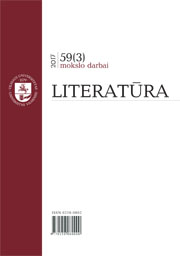REFLECTIONS ON DOMESTICATION: “TAME” AND “WILD” IN THE AESOPIC ANIMAL FABLES
REFLECTIONS ON DOMESTICATION: “TAME” AND “WILD” IN THE AESOPIC ANIMAL FABLES
Author(s): Tua KorhonenSubject(s): History, Studies of Literature, Ancient World, Greek Literature, Philology
Published by: Vilniaus Universiteto Leidykla
Keywords: fables; the Aesopic fables; domestication; domestic animals; wild animals;
Summary/Abstract: The focus of this paper is a complex literary genre – the Aesopic fables – where animals are portrayed as agents, and the basic question rests on how “the animal’s point of view” and the “animality” of its depiction of animals are manifested. By using philosopher Clare Palmer’s conceptualizations, it is to be shown that although the Aesopic animal fables function as moral allegories,they may also explicate and reveal differing kinds of views on domestication and of such categoriesas “tame” and “wild” – especially the versions that are told by Babrius. Domestic animals can be depicted as a part of the household with different roles and different statuses, but domestication can also be represented as a form of slavery for animals in contrast to the human-free existence of the wild animals, and the reason for domestication is that humans have more or less cheated animals into working for them (as an aetiology of domestication).
Journal: Literatūra
- Issue Year: 59/2017
- Issue No: 3
- Page Range: 37-50
- Page Count: 14
- Language: English

